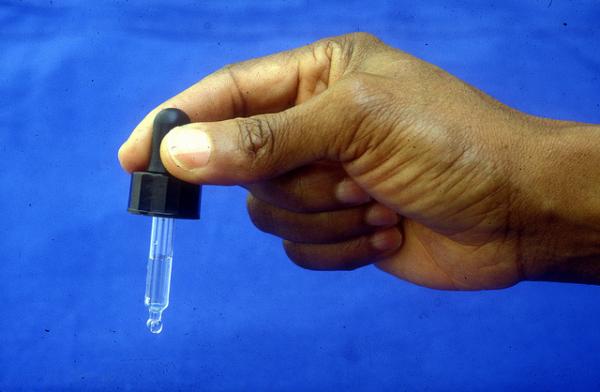Did you notice fairly recently the media reporting that the Supreme Court is allowing a class action suit involving eyedrops to go forward? My colleague, Erik Lief has written on the case previously. Briefly, the patients, now plaintiffs contend that eye drop manufacturers deliberately make eye drops too large resulting in wasted drugs and expenses running down their cheeks. Four of these suits have been dismissed, but this current one is moving forward. The recent legal wrangling has more to do with jurisdiction than the merits of the case and concerns my attorney friends more than you or I.
Eye drop Science
Eye drops are difficult for all of us because of the eye’s protective mechanisms, blinking, tearing and increased drainage. The sudden volume increase associated with drops fires up all of those ocular responses. The average eye volume is 7µl and rises to 30 µl when we are standing upright and not blinking. Studies have suggested that 15 µl is the ideal amount balancing getting it into your eye and that obligatory physiologic loss from blinking, etc. Eye drops from contemporary eye bottles dispense 30 µl, and that difference is the lawsuit’s wasted amount.
There are a number of physical and chemical properties that impact the size of drops formed, and they are well known. Several are controlled by the manufacturer:
- Surface tension – the forces attracting molecules together to make themselves compact. This is adjusted by the manufacturer through additives like the preservative benzalkonium chloride.
- Viscosity/Density – how thick the solution is, higher viscosity results in more of a protective response by the eye.
- The shape of the tip of the dispenser – the larger the opening’s cross-sectional diameter, the larger the drop.
And factors controlled by the patient are also at play.
- The tiIt of the bottle changes the shape of the tip’s cross-sectional diameter. Holding the bottle straight up yields a larger drop than when the bottle is tilted 45¢
- How hard the bottle is squeezed alters flow rate and drop formation. Harder squeezing creates larger drops.
- The temperature of the container – warmer plastic yields to fingertip pressure more easily than cold plastic (when the eye drops are kept in refrigeration)
The Clinical Use of Eye Drops
Using eye drops is a hassle for patients. Johns Hopkins’ eye program addresses this on their website pointing out that 25% of prescriptions were not refilled after the first one and of the remaining 75% only half, roughly a third of all patients prescribed eye drops were using them at the end of one year. To make the situation worse, only 70% were using the drops as directed.
So bottom line, at least clinically, eye medications have real entangled problems regarding delivery and use. The size of the eye drop is low on the list of real concerns.
The lawsuit’s arguments
The plaintiffs claim is simple, smaller eye drops would cost them less. They did not argue that medications caused physical harm, were ineffective in treating their condition or that the defendants misrepresented the medication or the number of drops that the bottle would dispense. The claim of less cost is based on the belief that less medication in the bottle results in a lower cost to the manufacturer that will be passed along to them.
The defendants argue that eye drops and their containers are "sterile products," and any alterations made to them are considered "major changes" that require pre-approval by the FDA. In fact, it is clear from the briefs filed by the defendants, that price is based on doses, not volume and that the required changes and subsequent FDA approval process will more than likely result in higher patient costs.
Eye drops are prescribed and sold by volume, changing the drop size will not necessarily result in savings to patients. If you genuinely believe Big Pharma has diabolically made eye drops “too large” for their financial gain, do you think that any cost savings will be passed along to consumers? Or is this another class action opportunity for lawyers and a $4 rebate to us?
Source: Determinants of Eye Drop Size Survey of Ophthalmology DOI:10.1016/j.survophthal.2003.12.009




